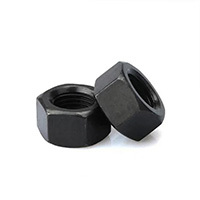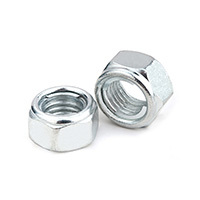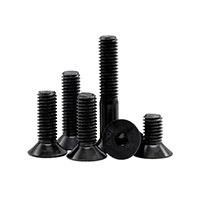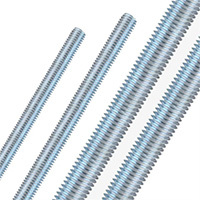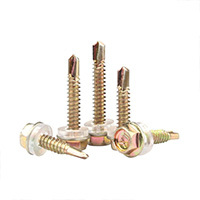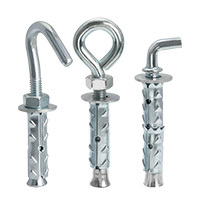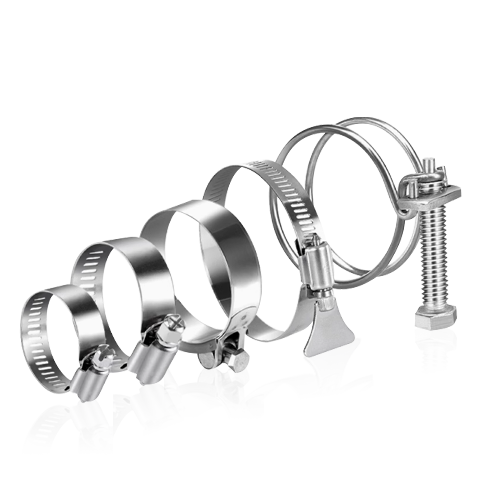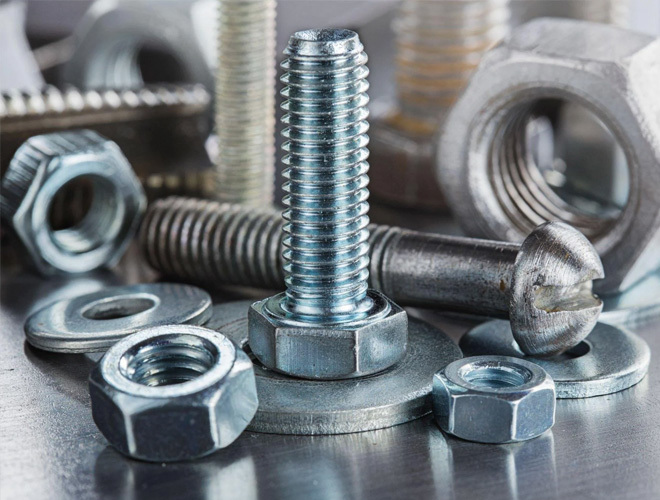High Strength Hexagon Bolts: Elevating Safety Standards in Industrial Settings
Jun 01,2025

High Strength Hexagon Bolts: Elevating Safety Standards in Industrial Settings
Table of Contents
- 1. Introduction to High Strength Hexagon Bolts
- 2. The Importance of High Strength Fasteners in Industry
- 3. Applications of High Strength Hexagon Bolts in Various Industries
- 4. Material Specifications for Enhanced Durability
- 5. Installation Best Practices for Hexagon Bolts
- 6. Maintenance and Inspection of High Strength Hexagon Bolts
- 7. Safety Standards and Regulatory Compliance
- 8. Conclusion
- 9. Frequently Asked Questions (FAQs)
1. Introduction to High Strength Hexagon Bolts
High strength hexagon bolts are fundamental components in modern industrial applications. They are characterized by their unique hexagonal head design, allowing for increased torque and better grip during installation. As industries strive for greater efficiency and safety, the demand for these robust fasteners has surged.
These bolts are engineered to withstand significant loads and harsh environmental conditions, making them ideal for critical applications where safety cannot be compromised. In this article, we will delve deep into the various aspects of high strength hexagon bolts, including their specifications, applications, and best practices to ensure maximum performance and reliability.
2. The Importance of High Strength Fasteners in Industry
The necessity for high strength fasteners in industrial settings cannot be overstated. These fasteners are crucial for maintaining structural integrity, particularly in applications subject to dynamic loads, vibrations, and extreme environmental conditions. Here are some key reasons why high strength hexagon bolts matter:
2.1. Enhanced Load-Bearing Capacity
High strength hexagon bolts are designed to handle significant tensile and shear loads, making them ideal for heavy machinery, structural frameworks, and transportation applications. Their robust design ensures that they can support the weight and stress associated with industrial operations.
2.2. Improved Safety Standards
Safety is paramount in any industrial environment. High strength hexagon bolts reduce the risk of failure, which can lead to catastrophic accidents. By using these bolts, industries can comply with stringent safety regulations and reduce liability risks.
2.3. Longevity and Durability
These fasteners are made from high-quality materials, which contribute to their durability. They resist corrosion, wear, and fatigue over time, ensuring that structures and machinery remain intact for longer periods, ultimately lowering maintenance costs.
3. Applications of High Strength Hexagon Bolts in Various Industries
High strength hexagon bolts find use across multiple sectors, each with unique requirements. Understanding these applications is crucial for selecting the right fasteners for specific tasks.
3.1. Construction
In construction, high strength hexagon bolts are used to secure beams, columns, and other structural elements. Their ability to withstand heavy loads makes them ideal for skyscrapers, bridges, and other large infrastructures.
3.2. Manufacturing
Manufacturers rely on high strength fasteners to assemble machinery and equipment. These bolts ensure that components remain securely attached, even under high stress and operational vibrations.
3.3. Automotive
In the automotive industry, high strength hexagon bolts are critical for assembling parts such as engines and chassis. Their reliability ensures that vehicles operate safely over extended periods.
3.4. Aerospace
The aerospace sector demands fasteners that are lightweight yet strong. High strength hexagon bolts meet these criteria, playing a vital role in aircraft assembly and maintenance.
3.5. Energy Sector
Whether in wind turbines or oil rigs, high strength hexagon bolts are essential in the energy sector for securing components that endure extreme forces and environmental conditions.
4. Material Specifications for Enhanced Durability
The materials used in manufacturing high strength hexagon bolts significantly influence their performance and suitability for various applications.
4.1. Carbon Steel
Carbon steel is one of the most common materials used for high strength hexagon bolts. It offers excellent tensile strength and is often treated with coatings to enhance corrosion resistance.
4.2. Alloy Steel
Alloy steel bolts contain additional elements such as chromium and nickel, enhancing their strength and durability. These bolts are often used in high-stress applications where maximum performance is required.
4.3. Stainless Steel
Stainless steel hexagon bolts are favored for their resistance to corrosion and oxidation. They are particularly useful in applications exposed to moisture or harsh chemicals.
4.4. Coatings and Treatments
Various coatings, such as zinc plating or hot-dip galvanizing, can significantly improve a bolt's corrosion resistance. Understanding the right treatment for specific environments is essential for ensuring longevity.
5. Installation Best Practices for Hexagon Bolts
Proper installation is crucial to ensure the effectiveness of high strength hexagon bolts. Follow these best practices to guarantee secure fastening.
5.1. Pre-Installation Inspection
Before installation, inspect both the bolt and the mating materials for any signs of damage or wear. Ensure that the surfaces are clean and free from debris.
5.2. Correct Torque Specifications
Applying the correct torque is vital for achieving the desired clamping force. Use a calibrated torque wrench to ensure accuracy during installation.
5.3. Use of Washers
Incorporating washers can distribute the load more evenly and prevent damage to the surfaces being fastened. Select the right type of washer based on the application and environment.
5.4. Rechecking After Installation
After installation, it's advisable to recheck the torque settings after a certain period of operation. This step ensures that the bolts remain securely fastened under operational loads.
6. Maintenance and Inspection of High Strength Hexagon Bolts
Regular maintenance and inspection of high strength hexagon bolts are crucial to ensure ongoing safety and reliability in industrial applications.
6.1. Routine Inspections
Conduct routine inspections to check for signs of wear, corrosion, or loosening. Early detection of issues can prevent catastrophic failures.
6.2. Replacement Guidelines
Establish clear guidelines for when to replace bolts. Factors such as age, environmental exposure, and load cycles should inform these decisions.
6.3. Lubrication Practices
Appropriate lubrication can reduce friction and wear during operation. Ensure that lubricants used are compatible with the materials of the bolts and surrounding components.
7. Safety Standards and Regulatory Compliance
Compliance with safety standards and regulations is essential when using high strength hexagon bolts in industrial settings.
7.1. Industry Standards
Familiarize yourself with industry-specific standards such as ASTM, ISO, and ANSI that govern the manufacturing and testing of fasteners. Adhering to these standards ensures the quality and safety of your products.
7.2. Certifications
Choose suppliers that provide certifications for their products. These certifications verify that the bolts meet required safety and performance standards.
7.3. Best Practices for Compliance
Develop best practices for compliance, including documentation, training, and regular audits to ensure that all employees understand and follow safety protocols.
8. Conclusion
High strength hexagon bolts are essential for enhancing safety standards in industrial settings. Their ability to withstand significant loads and harsh environments makes them indispensable across various sectors. By understanding their specifications, applications, and installation best practices, industries can ensure reliability and safety in their operations.
The implementation of high strength hexagon bolts not only elevates safety standards but also contributes to the longevity and durability of industrial structures and machinery. Regular maintenance and adherence to safety regulations will further enhance performance, ensuring that these critical components continue to serve their purpose effectively.
9. Frequently Asked Questions (FAQs)
1. What is a high strength hexagon bolt?
A high strength hexagon bolt is a type of fastener designed for heavy load applications, characterized by its hexagonal head that allows for high torque during installation.
2. In which industries are high strength hexagon bolts commonly used?
They are widely used in construction, manufacturing, automotive, aerospace, and energy sectors due to their superior load-bearing capacity and durability.
3. What materials are high strength hexagon bolts made from?
High strength hexagon bolts can be made from carbon steel, alloy steel, or stainless steel, often with coatings to enhance corrosion resistance.
4. How do I ensure proper installation of high strength hexagon bolts?
Ensure pre-installation inspections, apply the correct torque specifications, use washers when necessary, and recheck torque settings after installation.
5. What are the maintenance practices for high strength hexagon bolts?
Routine inspections, adherence to replacement guidelines, and appropriate lubrication practices are key to maintaining the integrity of high strength hexagon bolts.
Hot Tags:
PREVIOUS:
Contact
E-mail:
Phone:
Address:
Yongnian Southwest Development Zone, Handan City, Hebei Province
PRODUCT SEARCH
Search And Quickly Find The Products You Need
The company has a modern production workshop and a professional technical team. It has introduced advanced automated production equipment from home and abroad, strictly controls every production link, is customer-centric, and is committed to providing customers with high-quality products and services.
Continue Search OR Customize Products



